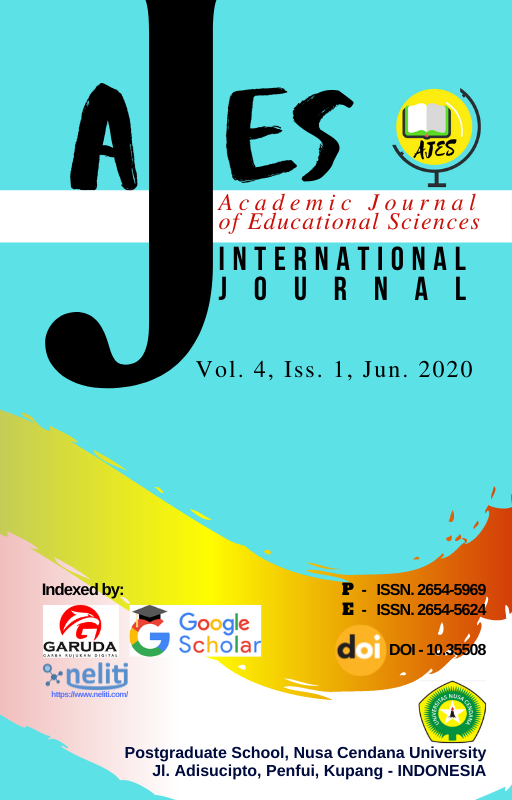FACTORS ENABLING CHILDREN ACQUIRING INDONESIAN AS A SECOND LANGUAGE: AN EAST TIMOR PERSPECTIVE
Abstract
This study is aimed at investigating factors enabling children acquiring Indonesian as second language (SLA). It was conducted
in Suco Comoro, Aldeia 03, Dili, East Timor. The method used in this study was qualitative descriptive. Its research subjectswere children aged
ten to 15 years old whose first language is Tetun, but they are now acquiring Indonesian. The instruments used to get the data were observations
dan in-depth interviews. The results of the research show that there are two major factors that help the children acquire Indonesian, namely,
intrinsic and extrinsic ones. The intrinsic factors are related to the children’s desires or willingness which stimulates them to use Indonesian.
These factors encompass motivation, self-confidence, self-esteem and language attitude. In contrast, the extrinsic factors are related to outside
supports that the children get, namely, from their environmentthat comprises their family relationship, peers, entertainment, and similarities of
some vocabularies between their first language (Tetun) and Indonesian.It is worth noticing, however, that despite their relatively good
acquisition of Indonesia, they still havesome errors in their Indonesian utterences, a phenomenon known as interlanguage in SLA.
Downloads


 Atanasio A. GusmãoFreitas Belo(1*)
Atanasio A. GusmãoFreitas Belo(1*)






